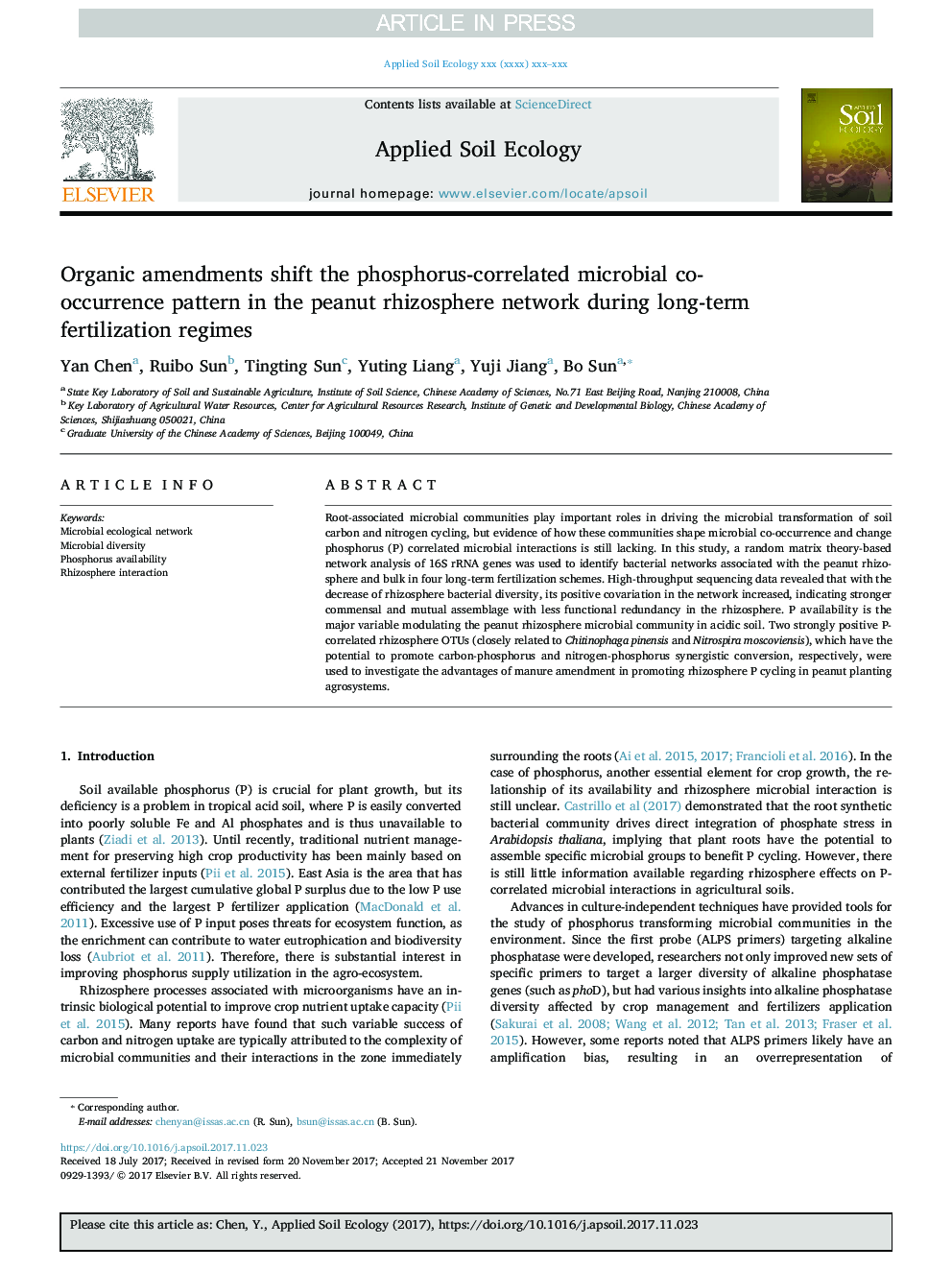| Article ID | Journal | Published Year | Pages | File Type |
|---|---|---|---|---|
| 8846792 | Applied Soil Ecology | 2018 | 11 Pages |
Abstract
Root-associated microbial communities play important roles in driving the microbial transformation of soil carbon and nitrogen cycling, but evidence of how these communities shape microbial co-occurrence and change phosphorus (P) correlated microbial interactions is still lacking. In this study, a random matrix theory-based network analysis of 16S rRNA genes was used to identify bacterial networks associated with the peanut rhizosphere and bulk in four long-term fertilization schemes. High-throughput sequencing data revealed that with the decrease of rhizosphere bacterial diversity, its positive covariation in the network increased, indicating stronger commensal and mutual assemblage with less functional redundancy in the rhizosphere. P availability is the major variable modulating the peanut rhizosphere microbial community in acidic soil. Two strongly positive P-correlated rhizosphere OTUs (closely related to Chitinophaga pinensis and Nitrospira moscoviensis), which have the potential to promote carbon-phosphorus and nitrogen-phosphorus synergistic conversion, respectively, were used to investigate the advantages of manure amendment in promoting rhizosphere P cycling in peanut planting agrosystems.
Related Topics
Life Sciences
Agricultural and Biological Sciences
Ecology, Evolution, Behavior and Systematics
Authors
Yan Chen, Ruibo Sun, Tingting Sun, Yuting Liang, Yuji Jiang, Bo Sun,
